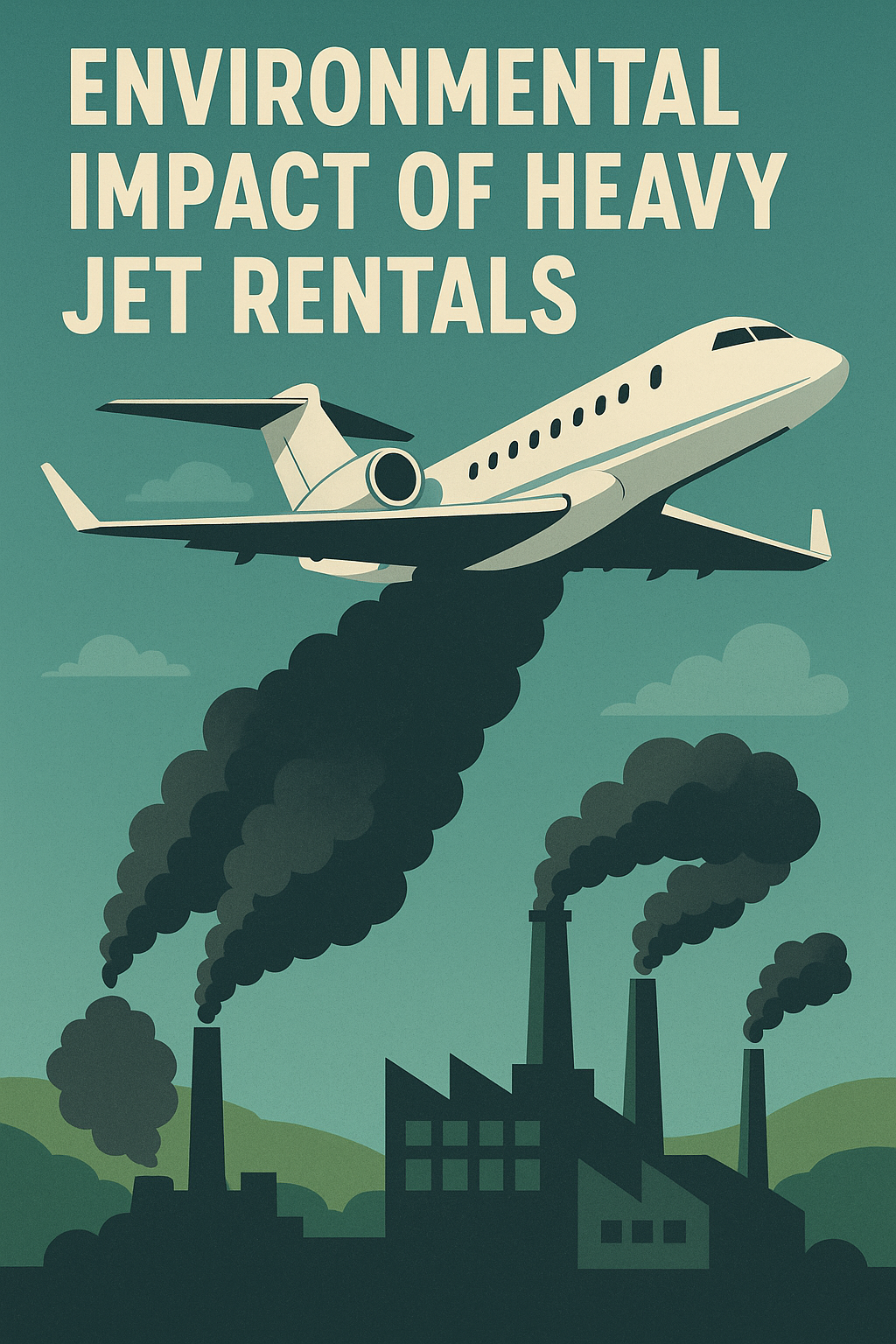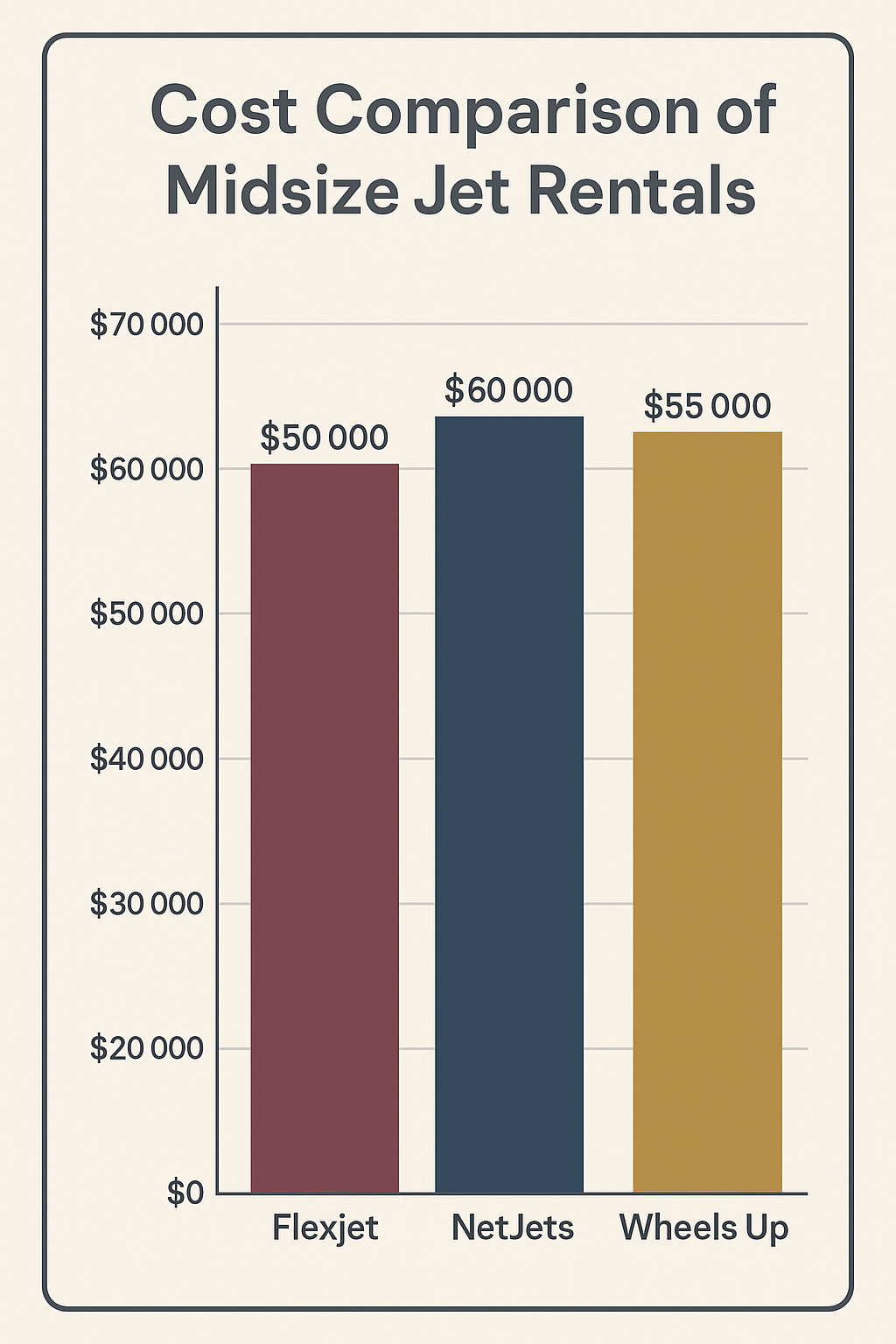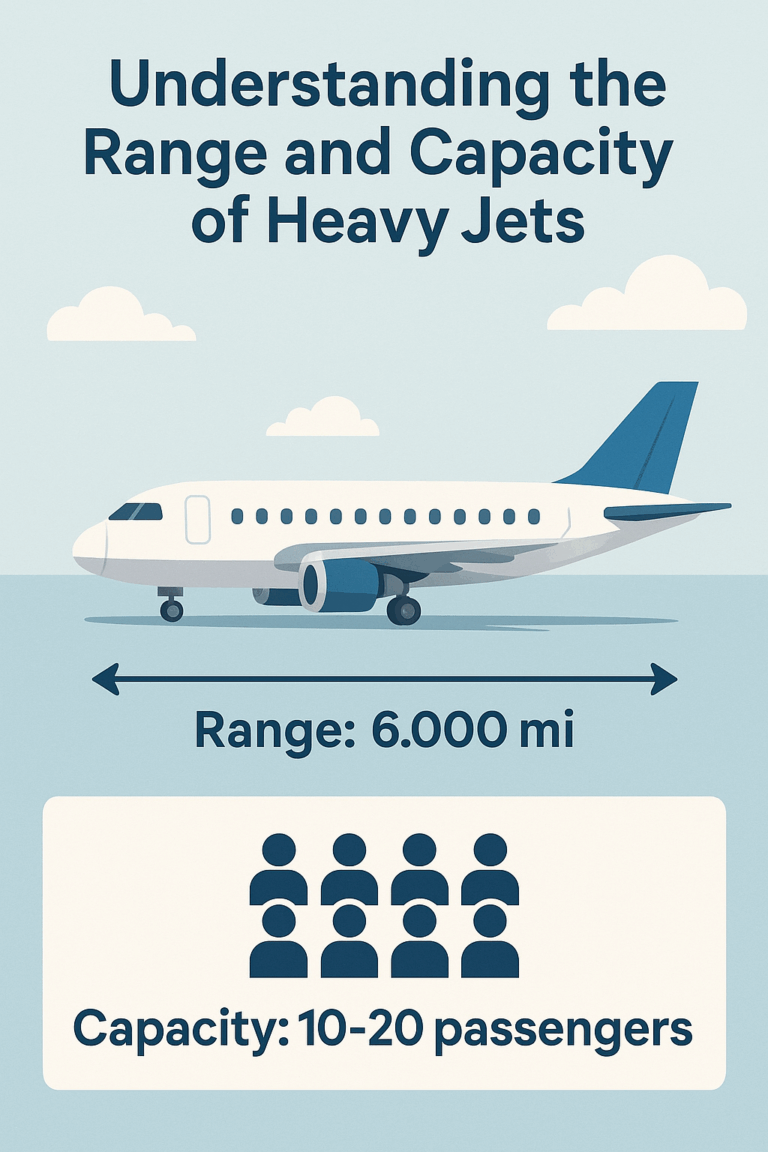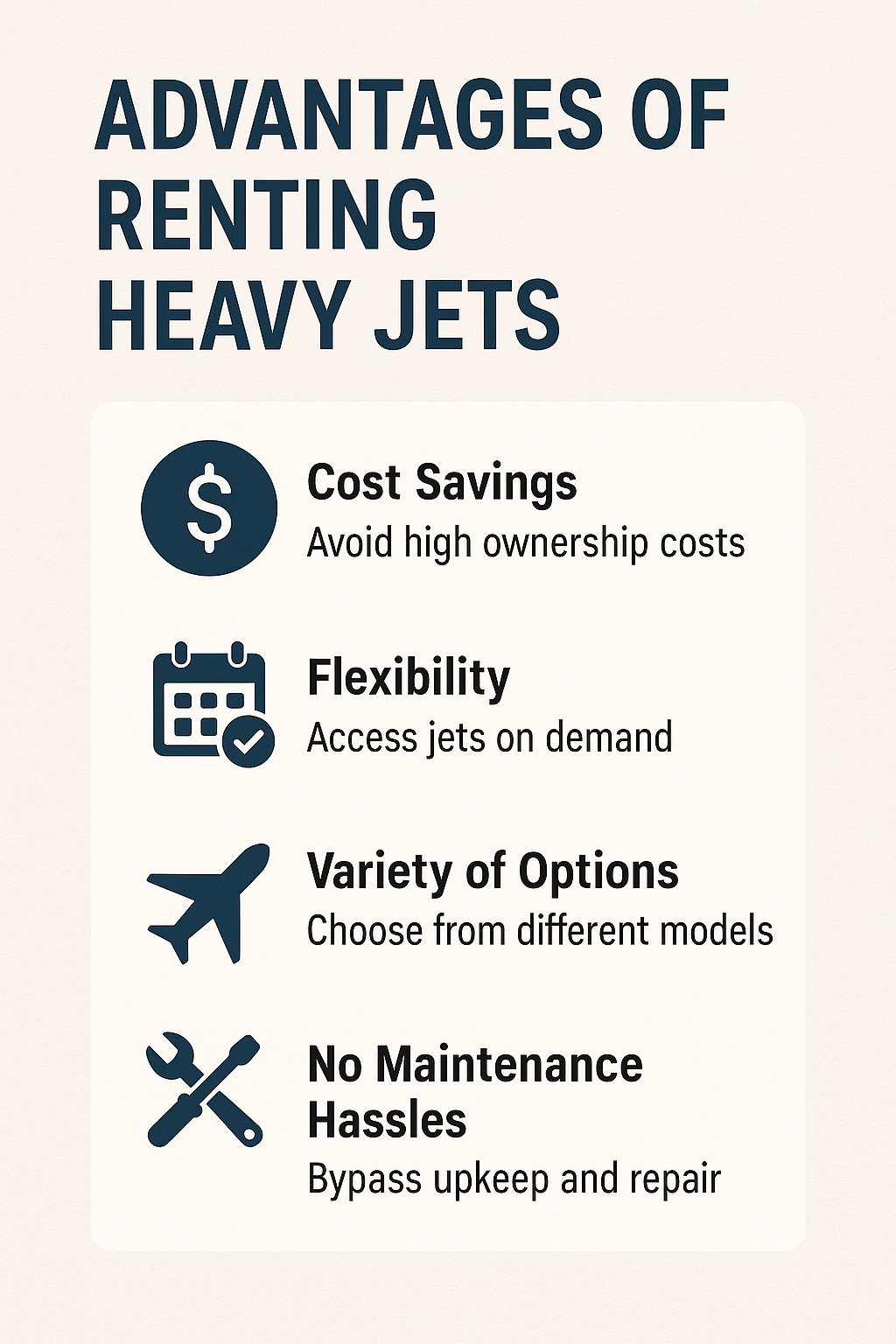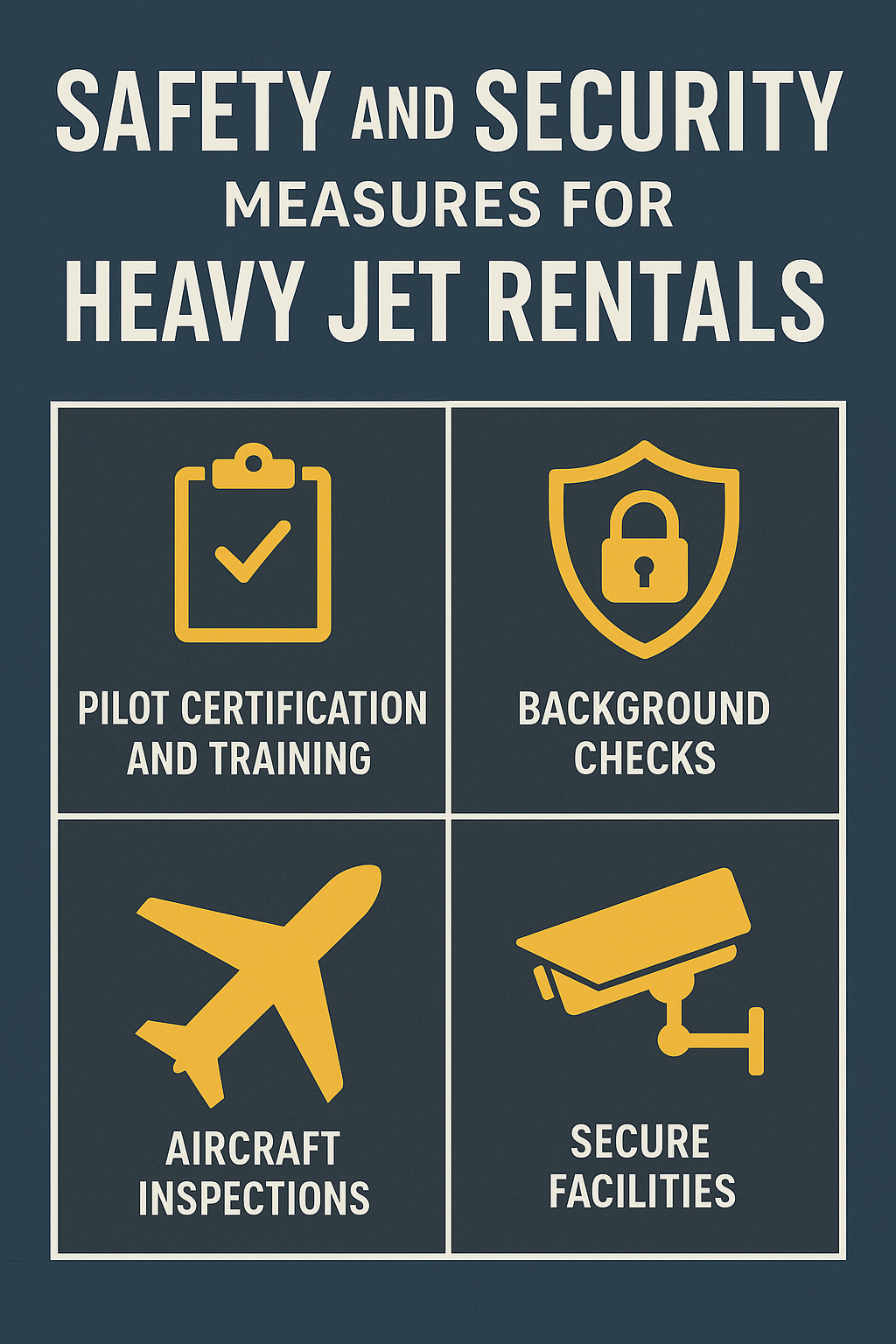Environmental Impact of Heavy Jet Rentals
Heavy jets are powerful aircraft that can emit between 2 to 3.5 tonnes of CO2 for every hour of flight. This is significantly higher than commercial flights, producing 5 to 14 times more emissions per passenger. They represent about 1.8% of total aviation emissions, and their environmental impact has surged by 46% since 2019.
However, newer heavy jet models are designed with better fuel efficiency in mind. This improvement helps to lessen their carbon footprint. Additionally, using Sustainable Aviation Fuel (SAF) can cut carbon emissions by as much as 80%.
For those who want to travel luxuriously while being environmentally conscious, carbon offset programs and various project-based initiatives are available. These options allow travelers to balance their love for luxury with a commitment to reducing their environmental impact.
Key Takeaways
Heavy jets are powerful aircraft that can produce significant carbon emissions. They typically emit between 2 to 3.5 tonnes of CO2 every hour. On average, each flight from a heavy jet results in around 3.6 tonnes of emissions. This large footprint makes heavy jets a major concern for environmentalists.
When we compare private jets to commercial flights, the difference is stark. Private jets can generate 5 to 14 times more carbon emissions per passenger. This means that flying privately is not the most eco-friendly option for travel.
One way to address these emissions is through Sustainable Aviation Fuel (SAF). This innovative fuel can lower carbon emissions by as much as 80% when compared to traditional jet fuel. It’s a promising alternative for those looking to reduce their environmental impact.
Additionally, travelers can participate in carbon offset programs. These programs can help offset up to 2 tonnes of CO2 emissions for every hour spent flying. It’s a proactive step for those who wish to balance their travel choices with environmental responsibility.
Newer heavy jets are designed with efficiency in mind. They operate at higher altitudes, which helps to reduce fuel consumption. These advancements aim to make flying a bit greener.
In summary, while heavy jets are convenient, they carry a hefty environmental price tag. Understanding their impact is crucial for making informed travel decisions.
Understanding Heavy Jet Carbon Footprint Metrics
How do we measure the environmental impact of luxury air travel? It starts by looking at how much carbon private jets emit. Heavy jets usually release between 2 to 3.5 tonnes of CO2 per hour. On average, each flight emits about 3.6 tonnes. Fuel use can differ widely depending on the model, with some jets burning an eye-popping 576 gallons per hour.
Luxury in the skies comes at a steep environmental price—up to 3.5 tonnes of CO2 per hour of private jet travel.
Heavy jets account for roughly 1.7% to 1.8% of all aviation emissions. Since 2019, their environmental impact has surged by nearly 50%. To truly care for our planet, we must recognize these numbers and push for better technology. The challenge of reducing carbon footprints is significant. Many jet operators still rely on traditional fuels instead of sustainable options. Measuring these impacts clearly is the first step towards real change.
Heavy jets, like the Bombardier Global and Gulfstream G650, are known for their luxury, but at what cost? Understanding their emissions helps us make informed choices about air travel.
As we look to the future, it’s vital to consider both comfort and sustainability in our flying habits.
Emissions Comparison: Heavy Jets vs. Commercial Aviation
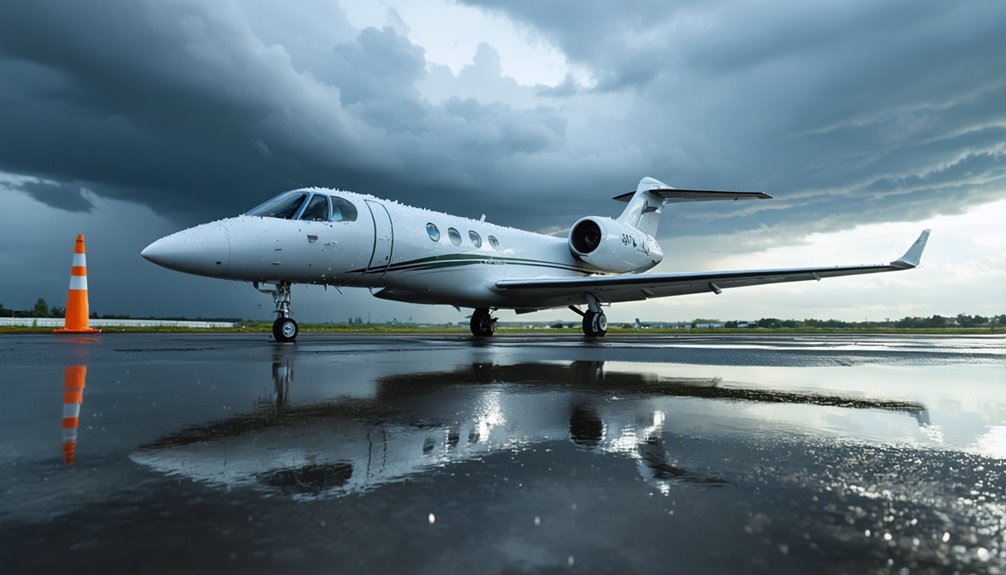
When we look at heavy jets, the difference in emissions compared to commercial aviation is striking. Heavy jets, often seen as symbols of luxury, come with a significant environmental impact. They emit 5 to 14 times more CO2 for each passenger than regular commercial flights.
In 2023, private aviation was responsible for 15.6 million tonnes of CO2, which makes up about 1.8% of the total emissions from commercial aviation. On average, each heavy jet flight releases 3.6 tonnes of CO2. Many of these flights, nearly half, travel less than 500 kilometers.
This pattern shows a troubling inefficiency and has resulted in a 46% rise in carbon emissions since 2019. To lessen the environmental footprint of private jet travel, we need to find creative solutions that can tackle these pressing environmental issues while still catering to the needs of the growing sector.
Heavy jets, like the Bombardier Global series or Gulfstream G650, are popular choices for those who prioritize comfort and speed. However, as they soar through the skies, their impact on climate change becomes a growing concern.
It’s essential to balance the allure of these luxurious aircraft with the urgent need for sustainability.
Technological Advancements Reducing Environmental Impact
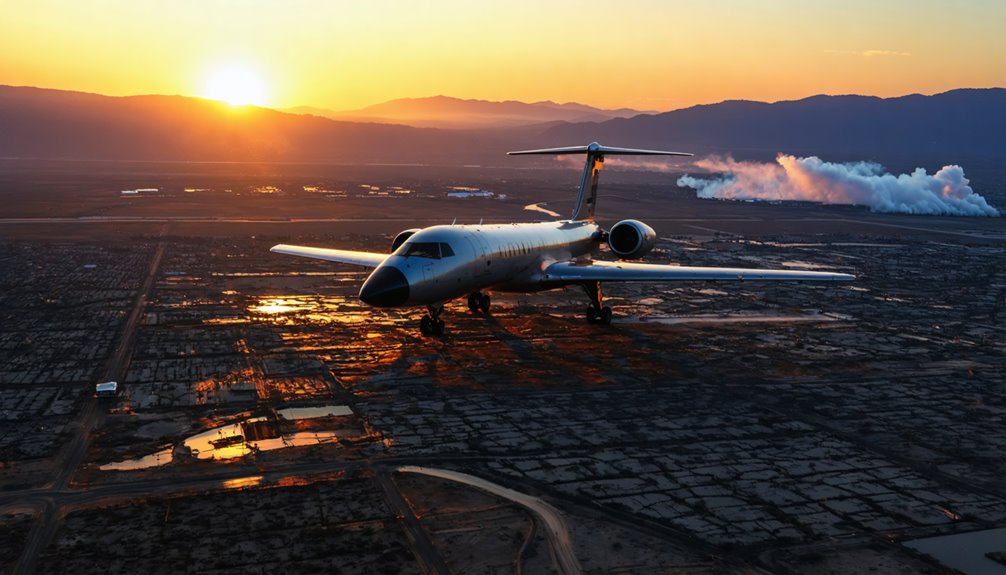
Heavy jets are a popular choice in private aviation. They offer spacious interiors, luxurious amenities, and can carry a large number of passengers. These aircraft are ideal for long distances, and they often come equipped with powerful engines that provide a smooth and fast ride.
Experience the epitome of private travel with heavy jets – where luxury meets efficiency for comfortable long-distance journeys.
Manufacturers like Bombardier and Gulfstream lead the market with their heavy jet models. For instance, the Bombardier Global 7500 is known for its advanced technology and impressive range. It can fly non-stop for over 7,700 miles. This means you can travel from New York to Hong Kong without stopping.
Heavy jets also focus on comfort. The cabins often include high ceilings and large windows, giving passengers a sense of openness. You’ll find plush seating, gourmet catering options, and even private bedrooms in some models.
In terms of performance, heavy jets are built for efficiency. They’re designed to operate at higher altitudes, which helps reduce fuel consumption. This means they can save money on long flights while also being more environmentally friendly.
Sustainable Aviation Fuel Options for Heavy Jets
The aviation industry is facing challenges with the adoption of Sustainable Aviation Fuel (SAF). Some of the main issues are limited production capacity and significantly higher prices compared to traditional jet fuel. Many major airlines and operators are setting ambitious targets. They aim to use 10% SAF by 2030. However, a full switch to SAF will take longer. Experts predict that widespread use won’t happen until the 2040s. This timeline is based on the expectation that production will scale up and costs will drop as technology improves.
Heavy jets, which are larger and carry more passengers, will play a crucial role in this transition. These aircraft typically have higher fuel consumption, making the shift to SAF even more important for reducing carbon emissions. Companies are investing in research and development to create efficient SAF options suitable for heavy jets. As technology advances, we might see more affordable and accessible SAF in the coming years.
The push for SAF isn’t just about meeting targets. It’s about ensuring a sustainable future for air travel. The aviation industry is aware of its environmental impact and is taking steps to mitigate it.
As more operators commit to sustainable practices, we may witness a significant change in how heavy jets operate. The journey toward cleaner aviation is ongoing, and the hurdles ahead will require collaboration and innovation.
SAF Adoption Barriers
Heavy jets have the potential to change the game in the aviation industry, especially with the introduction of Sustainable Aviation Fuel (SAF). Yet, several challenges stand in the way of this change.
First, production capacity for SAF is quite low. Currently, SAF accounts for less than 1% of all jet fuel used worldwide. This limited supply creates a bottleneck, making it hard for heavy jet operators to access the fuel they need.
Second, the cost of SAF is a big hurdle. It’s generally more expensive than traditional jet fuel. This price difference poses a problem for operators who already face tight financial margins in a highly competitive rental market.
Third, the regulatory landscape is complex. Different countries have various rules and certification processes for SAF. This inconsistency can confuse manufacturers who want to use different renewable feedstocks. As a result, innovation slows down.
To move forward, government incentives will be crucial. These incentives can help overcome existing barriers and support the aviation industry’s efforts to reduce carbon emissions.
Future Implementation Timeline
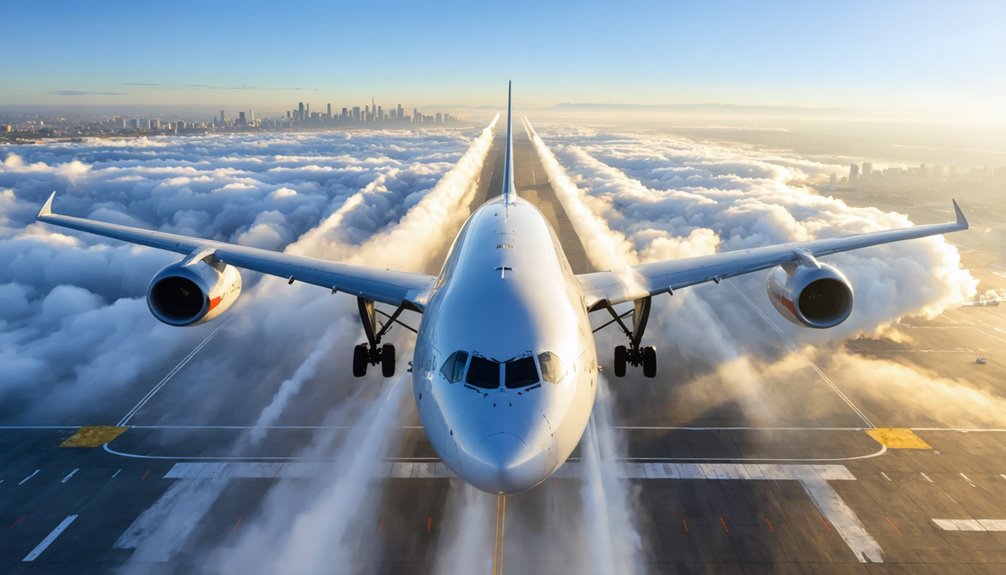
Private jets come in various types, but heavy jets stand out for their capacity and range. These aircraft, like the Bombardier Global 7500 and Gulfstream G650, offer luxurious travel for long distances. They provide ample space for passengers and cargo, making them ideal for business and personal use.
Now, let’s talk about Sustainable Aviation Fuel (SAF). The aviation industry is moving towards using SAF for heavy jets. This shift is important for reducing carbon emissions. The timeline for this change stretches from 2025 to 2035. During this period, manufacturers aim to integrate eco-friendly fuel options gradually.
Here are the key milestones:
| Timeline | Implementation Milestone | Expected Impact |
|---|---|---|
| 2025-2027 | Initial SAF integration at major airports | 20-30% carbon reduction |
| 2028-2030 | Regulatory incentives fully activated | 40-50% industry adoption |
| 2031-2035 | Widespread technological advancement | 60-80% emission decrease |
By 2025, major airports will start introducing SAF. This initial phase will cut carbon emissions by 20-30%. Following that, between 2028 and 2030, regulations will encourage the use of SAF, leading to a 40-50% adoption rate in the industry. Finally, by 2035, advancements in technology will help achieve a significant 60-80% reduction in emissions.
The push for eco-friendly practices is strong among private jet manufacturers. They are investing in sustainable aviation methods. This focus on SAF will transform how heavy jets operate in the coming years, making air travel greener.
Carbon Offset Programs for Private Jet Travelers
Heavy jets are a popular choice for those who prioritize luxury and comfort during their travels. These aircraft are designed for long-distance flights and can carry a larger number of passengers while offering spacious interiors and high-end amenities. Examples of heavy jets include the Gulfstream G650, Bombardier Global 7500, and the Dassault Falcon 8X. Each of these models provides exceptional range and performance, making them ideal for both business and leisure trips.
When flying on heavy jets, it’s important to be aware of the environmental impact. These flights can produce significant carbon emissions. To address this, many private jet operators offer carbon offset programs. These initiatives allow travelers to invest in projects that counterbalance their flight emissions, such as renewable energy and reforestation.
Choosing a carbon offset program is essential for reducing your environmental footprint. Look for verified projects with clear, measurable benefits. This ensures that your investment genuinely supports efforts to combat climate change. For instance, reforestation projects not only absorb CO2 but also restore ecosystems and enhance biodiversity.
Using carbon offsets can mitigate up to 2 tonnes of CO2 emissions per flight hour. This makes them a vital option for those who care about the environment but still want the luxury of private air travel.
Embracing these solutions allows you to enjoy the benefits of heavy jets while contributing positively to the planet.
Project-Based Offsetting
Private jet travel, especially in heavy jets, has a notable carbon footprint. Yet, project-based offsetting gives thoughtful travelers a way to take responsibility for their environmental impact. These carbon offset programs are designed to support projects that make a real difference.
Some effective project-based offsets include:
- Reforestation projects that capture carbon and help restore vital ecosystems.
- Renewable energy projects that help communities shift away from fossil fuels.
- Conservation efforts that not only reduce emissions but also provide social advantages.
Many heavy jet operators now offer offsetting options when booking. This makes it easier for travelers to consider their environmental impact while enjoying luxury travel.
Verified Program Selection
When flying in a private jet, choosing the right type can greatly affect your travel experience. Heavy jets are a popular choice among travelers who seek comfort and space. These jets offer larger cabins, allowing for more room to move around and relax. They also have the ability to fly longer distances without needing to refuel, making them ideal for international trips.
Heavy jets are known for their impressive performance. They can soar at high altitudes, avoiding turbulence and providing a smoother ride. Many models come equipped with luxurious amenities, such as spacious seating, private bedrooms, and advanced entertainment systems. These features make heavy jets a preferred option for business executives and high-profile individuals.
Several manufacturers dominate the heavy jet market. Notable names include Gulfstream, Bombardier, and Dassault. Each brand has its own unique offerings, often tailored to specific needs. For instance, the Gulfstream G650 is celebrated for its speed and range, while the Bombardier Global 7500 boasts an impressive cabin layout.
Traveling in a heavy jet not only enhances your journey but also allows for a more private and personalized experience. Many passengers appreciate the option to customize their flights, selecting everything from in-flight meals to entertainment choices. This level of service makes heavy jets stand out in the aviation industry.
Regulatory Framework Governing Heavy Jet Emissions
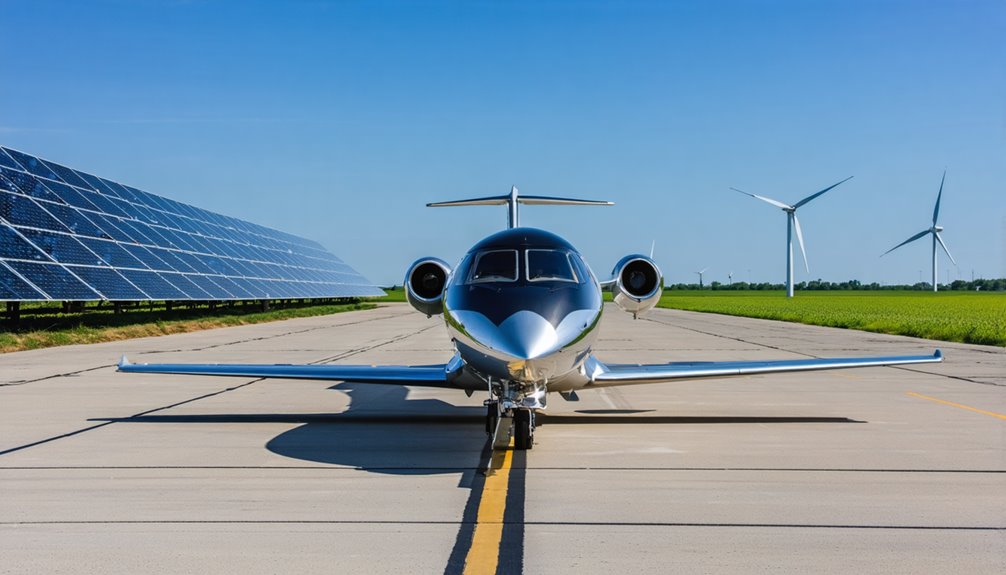
Heavy jets come in various types, each designed for specific needs. These aircraft play a crucial role in private aviation, offering speed and luxury. Popular models include the Bombardier Global 7500, Gulfstream G700, and Embraer Legacy 600. Each jet has unique features that appeal to different passengers.
As countries face pressure to reduce carbon emissions, the rules around heavy jet emissions are changing. France and Spain are taking steps to limit flights where train options are available. This move encourages more environmentally friendly travel choices.
Meanwhile, manufacturers are under pressure to meet tougher standards for emissions in private jets. Regulations now focus on several key areas:
- Improved fuel efficiency to lessen the environmental impact.
- Requirements for sustainable aviation fuels to lower greenhouse gas emissions.
- Public campaigns that raise awareness about climate change and its effects.
Instead of imposing strict bans, the European Union is promoting innovation. This method aims to find a balance between the need for air travel and the responsibility to protect the environment.
I foresee that this regulatory shift will lead to the use of hydrogen and other green fuels, greatly enhancing the sustainability of private jets.
Economic Benefits vs. Environmental Costs
Heavy jets, a type of private aircraft, offer a luxurious way to travel. They can improve business efficiency, allowing companies to save time and increase productivity. For instance, executives can reach remote locations quickly, making important meetings possible.
However, the environmental costs are significant. A single flight can emit around 3.6 tonnes of CO2, which is nearly half of what an average person in a developed country produces in a year.
Private jets: convenience with a climate cost of 3.6 tonnes per flight—half a year’s carbon footprint.
Since 2019, flights from private jets have increased their emissions by 46%. This surge raises concerns about sustainability. While the comfort and convenience of heavy jets are appealing, we must also consider their environmental impact. Regulatory bodies are beginning to impose stricter standards. This pushes jet operators to innovate and find ways to reduce emissions.
The future of heavy jet rentals hinges on finding a balance. Operators need to focus on technology that minimizes carbon footprints. Sustainable aviation fuel, for example, could play a role in lowering emissions.
As the industry evolves, so must our approach to flying in heavy jets. The focus should be on maintaining utility while protecting our planet.
Future Trends in Green Private Aviation
Heavy jets represent a significant segment of private aviation. They’re known for their spacious cabins, long-range capabilities, and impressive performance. These jets are ideal for long-distance travel and can comfortably accommodate multiple passengers.
One popular example of a heavy jet is the Gulfstream G650. It offers a high cruising speed and a range of over 7,000 nautical miles. This means it can fly non-stop from New York to Tokyo. The cabin is designed for luxury, featuring large windows and advanced technology.
Another noteworthy heavy jet is the Bombardier Global 7500. It boasts an exceptional range of 7,700 nautical miles. This aircraft stands out for its spacious interior and innovative design, making it a favorite among business travelers.
Heavy jets are often equipped with advanced avionics and powerful engines. These features enhance safety and efficiency during flights. They can operate in various environments, from busy airports to smaller airstrips.
In recent years, there’s been a push towards greener heavy jets. Manufacturers are exploring sustainable fuels and more efficient engines. This shift aims to reduce the environmental impact of private aviation, aligning with global trends towards sustainability.
Practical Steps for Eco-Conscious Jet Travelers
When it comes to private aviation, heavy jets stand out for their spaciousness and long-range capabilities. These types of jets are perfect for travelers who need comfort and efficiency. Heavy jets, like the Gulfstream G550 or Bombardier Global 6000, offer a luxurious experience while still being mindful of environmental impacts.
Opting for operators that focus on eco-friendly methods is a great choice. Some heavy jets can use Sustainable Aviation Fuel (SAF), which significantly lowers carbon emissions—up to 80% less than traditional jet fuels. This is a big win for the environment.
Sustainable Aviation Fuel allows heavy jets to reduce emissions by up to 80%, making eco-friendly flying a reality.
Booking private flights can also involve carbon offset programs. These initiatives allow travelers to support projects that help reduce overall emissions. It’s a responsible way to balance the carbon footprint of flying.
Fuel efficiency matters too. Newer heavy jets often match commercial airlines in how efficiently they transport passengers. They’re designed to maximize space and minimize waste.
Another smart option is to look for empty leg flights. These flights occur when a jet is returning to its base or heading to pick up other passengers. By using these flights, travelers can reduce costs and make better use of available aircraft, decreasing unnecessary fuel consumption.
Frequently Asked Questions
How Much Damage Do Private Jets Do to the Environment?
Private jets come in various types, including heavy jets. These heavy jets are larger and can carry more passengers and luggage. However, they also consume a lot of jet fuel. The fuel usage leads to a significant carbon footprint. Studies show that heavy jets can produce carbon emissions 5 to 14 times higher than regular commercial flights.
This high fuel consumption contributes massively to climate change. It does not stop there. Heavy jets also create considerable noise pollution. People living near airports often complain about the constant roar of these planes. The luxurious nature of private travel does not shield it from these negative impacts.
In simple terms, while heavy jets offer comfort and convenience, they come at a steep environmental cost. As more people choose this type of travel, the effects on our climate and communities become harder to ignore.
How Much CO2 Is Emitted by a Private Jet?
Heavy jets are among the largest types of private planes. They are known for their spacious interiors and long-range capabilities. However, they also come with a significant environmental cost. For instance, a typical flight on a heavy jet can emit around 3.6 tonnes of CO2. Some models, depending on their fuel efficiency and how often they fly, can release up to 2 tonnes of CO2 every hour.
These jets often serve business executives and those who prioritize comfort and speed. But their high emissions raise concerns about climate change. More people are starting to question the impact of private air travel on the environment. As awareness grows, many are looking for greener alternatives or ways to offset their carbon footprint.
In short, while heavy jets offer luxury and convenience, they contribute heavily to carbon emissions, making them a topic of discussion in the fight against climate change.
Do Private Jets Pollute More Than Cars?
When comparing private jets to cars, private jets are far more polluting. Their emissions are significantly higher. For example, just one hour of flying in a heavy jet can produce more carbon dioxide than most people’s entire yearly emissions from driving cars.
Heavy jets, like the Gulfstream G650 or Bombardier Global 7500, are luxurious but come with a hefty environmental price. These aircraft burn a lot of fuel. They emit large amounts of greenhouse gases into the atmosphere. This creates a substantial carbon footprint.
Sustainable aviation is crucial. We need stricter rules to tackle the environmental impact of luxury travel. It’s important to think about how our choices affect the planet. The aviation industry must innovate to reduce its emissions.
In short, while cars do contribute to pollution, the impact of private jets is much greater. The luxury they offer comes at a serious cost to our environment.
Are Long-Haul Flights Worse for the Environment?
Heavy jets are a category of private aircraft known for their larger size and greater range. These jets can carry more passengers and luggage compared to smaller models. However, they are also less fuel-efficient. They consume significant amounts of fuel, resulting in higher carbon emissions.
When it comes to flying, frequency matters. If you choose to fly frequently, the impact on the environment multiplies. Each flight adds to the overall emissions. While technology is advancing and carbon offset programs are available, they do not eliminate the environmental challenge posed by heavy jets.
Conclusion
Heavy jets are a category of private jets that come with their own set of environmental concerns. Critics often highlight their large carbon emissions. However, it’s important to recognize the advancements in the aviation industry that can help reduce this impact.
Sustainable aviation fuels (SAF) are becoming more available, and they can lower the carbon footprint of flying. Additionally, newer aircraft models are designed with better fuel efficiency. Programs that allow travelers to offset their carbon emissions are also gaining traction.
By choosing the latest jet models, using SAF when possible, and engaging in verified offset initiatives, you can lessen your impact on the environment. Private aviation can still be convenient while being more environmentally friendly.
